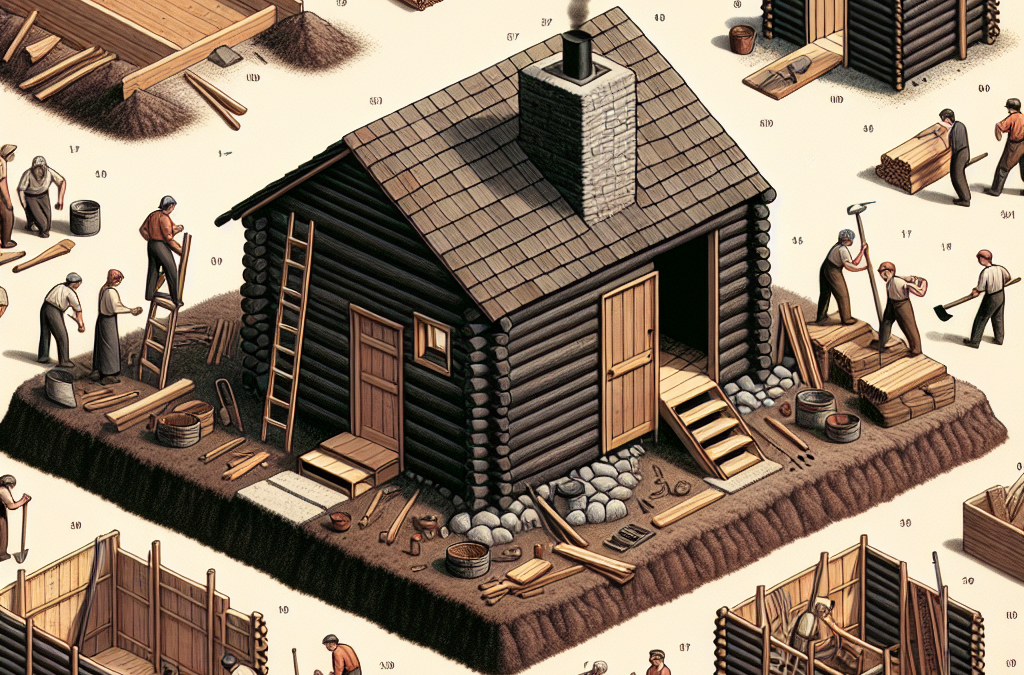Choosing the Right Location
Consider Your Surroundings
When I set out to build my smokehouse, one of the first things I realized was how vital location is. You want to find a spot that’s not only accessible but also away from your main living area. Wood smoke can be pretty strong, especially when you’re firing it up for hours. I discovered that setting it back a little from the house allows me to enjoy the aroma without it taking over our home.
Also, think about wind direction. You don’t want smoke blowing into your living spaces or neighboring properties. Trust me, no neighbor wants to smell bacon all day long if they weren’t invited to the feast! It’s all about being considerate and keeping peace in the homestead.
Lastly, sunlight matters! You’ll want your smokehouse to get some sun for part of the day—this will help with drying and flavoring your meats. Finding that sweet spot, where you get a mix of shade and sun, will make a world of difference.
Gathering Materials
Wood Choices
When it comes to building materials, I found that the type of wood you choose can heavily influence the flavor of the meat. Hardwoods like hickory, oak, or applewood are excellent choices. Each brings its own unique flavor profile, enhancing your smoked dishes. That’s something I learned after experimenting a bit—you really can taste the difference!
In my case, I went for hickory because it’s robust and pairs beautifully with most meats. But don’t be afraid to try other options. You might discover an unexpected favorite like cherry wood for a milder, sweeter smoke.
Also, don’t overlook insulation! The inside of your smokehouse needs to retain heat well, so materials like cement board or insulation foam can play a key role in maintaining consistent temperatures while you’re smoking.
Designing Your Smokehouse
Size Matters
As I began drawing up plans for my smokehouse, size was a major factor. I initially thought of building a smaller structure, but then I remembered those times I overstuffed our old smoker. So, I decided to go bigger! This allows for more versatility in what I can smoke, whether it’s for parties or the winter stockpile. Having a spacious smokehouse means I can tackle multiple projects all at once.
Once I knew I wanted a larger size, I started sketching out shelves. I recommend spacing them strategically so you’re not crammed when trying to hang all that delicious meat. Plus, adjustable shelves seemed like a no-brainer since my needs might change as I experiment with different foods.
Lastly, don’t forget about ventilation. It’s crucial for even smoke distribution and temperature control. I designed mine with a chimney and some adjustable vents to help manage airflow, which is key when you’re dialing in your favorite smokiness.
Building the Structure
Foundation First
I learned quickly that a solid foundation is a must when building your smokehouse. I opted for concrete blocks, which are durable and provide a great base. Spending a little extra time here ensures that my smokehouse stands firm through seasons of weather and temperature fluctuations. Plus, it keeps those pesky critters out!
It makes sense to level the foundation as much as possible. I found that taking the time to get this step right saved me a ton of headaches later on. Who wants a lopsided smokehouse? Not me!
From there, it was all about raising the walls. You can either go the conventional route with wood framing or even build masonry walls if you’re feeling ambitious. Just remember to use materials that can withstand the heat and smoke.
Smoking Techniques
Temperature Control
When I finally had my smokehouse up and running, learning to control the temperature became my new obsession. Different meats require different smoking temperatures to achieve that perfect flavor and texture. I discovered that low and slow is the way to go for most meats, especially when it comes to brisket and pork shoulder.
One invaluable tool for maintaining temperature was investing in a good thermometer. This baby helped me monitor the internal temperature without having to constantly open the door and let the smoke escape. Trust me; that’s crucial to getting juicy, flavorful results.
As I experimented, I learned about cold smoking, which adds a whole new dimension to flavor. Using lower temperatures and longer times for things like cheese or salmon really set my culinary efforts apart from store-bought versions!
FAQ
1. What type of wood should I use for smoking?
Hardwoods like hickory, oak, and fruit woods such as apple or cherry are great choices. They provide unique flavors to your smoked dishes.
2. How do I control the temperature in my smokehouse?
Using a good thermometer is key! It helps you keep an eye on the internal temperatures without opening the door too often, which would let out precious smoke and heat.
3. Can I cold smoke in this smokehouse?
Absolutely! With the right setup and lower temperatures, you can cold smoke foods like cheese or fish, adding incredible flavors.
4. How often should I clean my smokehouse?
It’s a good practice to clean your smokehouse after every use. Remove any residue and ash to prevent unwanted flavors in future smokes.
5. Do I need a permit to build a smokehouse?
Check your local regulations! Some areas require permits or have restrictions regarding smokehouses, especially concerning ventilation and distance from other buildings.





